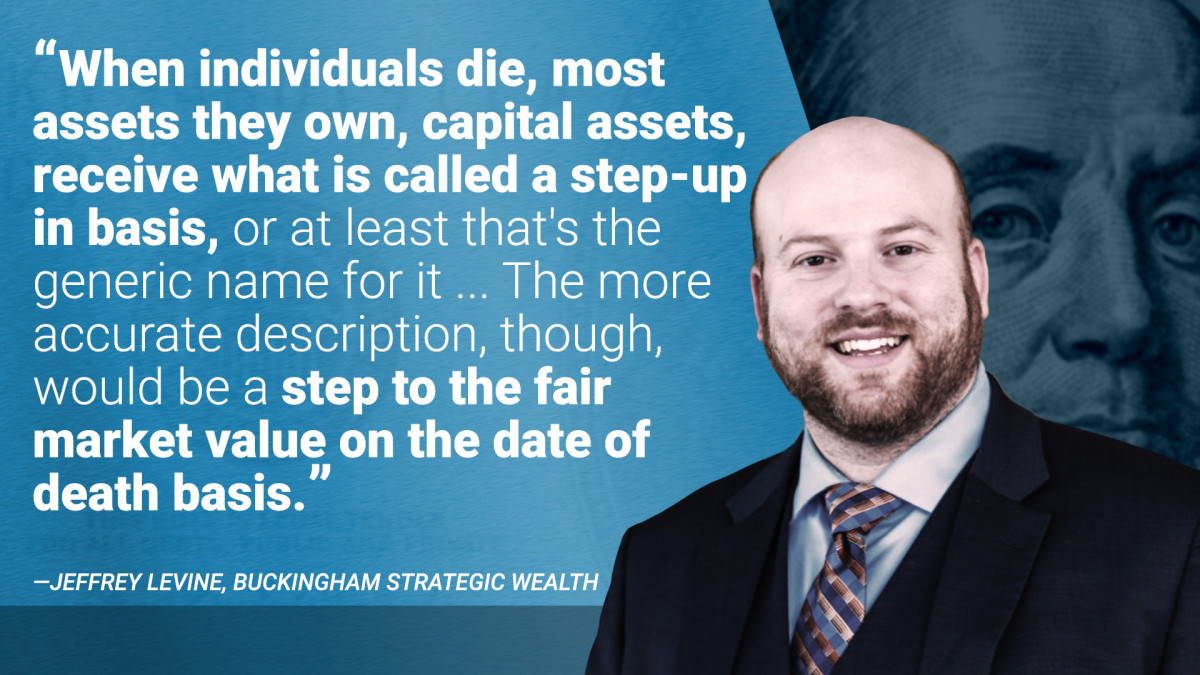Have you recently inherited an asset from a loved one?
Retirement Daily’s Robert Powell caught up with Jeffrey Levine, CPA and tax pro from Buckingham Strategic Wealth Partners, to discuss the tax consequences.
TurboTax Live experts look out for you. Expert help your way: get help as you go, or hand your taxes off. You can talk live to tax experts online for unlimited answers and advice OR, have a dedicated tax expert do your taxes for you, so you can be confident in your tax return. Enjoy up to an additional $20 off when you get started with TurboTax Live.
Recommended: Cost Basis: Tracking Your Tax Basis
Quotes| Inheriting an Asset? How to Reconstruct Cost Basis Jeffrey Levine, Chief Planning Officer, Buckingham Strategic Wealth Jeffrey Levine, Chief Planning Officer, Buckingham Strategic WealthRecommended: 4 Ways to Protect Your Inheritance from Taxes
Video Transcript| Jeffrey Levine, CPA and Tax Expert, Buckingham Strategic WealthRobert Powell: If someone dies and you inherit an asset, how do you go about reconstructing cost basis? Well to talk with us about that is Jeffrey Levine from Buckingham Wealth Partners. Jeffrey, what tax tips do you have on this one?
Jeffrey Levine: Well, I’ve got a great tax tip here. The tax tip is you generally don’t have to worry about it. When individuals die, most assets they own, capital assets, receive what is called a step-up in basis, or at least that’s the generic name for it, a step-up in basis. The more accurate description, though, Bob, would be a step to the fair market value on the date of death basis. So whether the asset has gone up in value since someone purchased it or down in value, effectively you look at what the asset was worth on the date of death. And that becomes the inheritor’s new basis in that asset. So for instance, maybe Dad bought something years ago, and you don’t know what it was. Maybe he bought it for $2, maybe he bought it for $20, but it’s worth $130 today. Well, when let’s say Dad’s daughter inherits that asset, if Dad dies today, whatever Dad bought it for doesn’t matter. The daughter would have basis of $130 because that’s what it was worth on the day Dad died. It’s one of the greatest tax erasers there is in the entire tax code.
Robert Powell: Right, so there’s some nuance to that if I’m not mistaken. Right, there’s the date of death cost, and then there’s another opportunity to use a different basis.
Jeffrey Levine: Well, there is. But for very few individuals. So there’s what’s called the alternate valuation date. And the alternate valuation date does allow you to use a date that’s six months after the individual’s death. However, the estate would have to elect that, and the estate can only choose to do that when the estate would have been taxable. And with today’s exemption amount, $12 million per person, more than that, it’s very unlikely that the estate was going to be taxable. So it is truly for the overwhelming majority of individuals the date of death.
Now, there are other assets, though, that don’t follow the step-up in basis. And the most notable for most individuals is retirement accounts: IRAs, 401(k)s, etc. If Mom or Dad had a 401(k) with basis in it, the plan should be able to tell you that information. If they had an IRA with basis in it, and most don’t, but if they did, that would actually be reported on a special form in their tax return known as 8606, which reports after tax dollars in IRAs. So you could take a look at that, double check, and make sure that there was no 8606 in any of the decedent’s prior years’ returns.
Editor’s Note: The content was reviewed for tax accuracy by a TurboTax CPA expert.
Zach Faulds contributed to the writing of this article and produced the video and/or the graphics associated with it.
